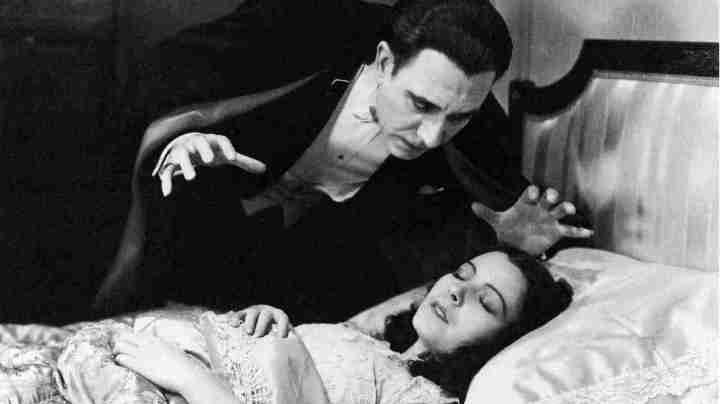The Classic ‘Dracula’ Has a Forgotten Version in Spanish That’s Way Better Than the Original

'Drácula' starring Lupita Tovar and Carlos Villarías. Courtesy of Universal Pictures
Halloween’s right around the corner, which means it’s a good time to brush up on some select Spanish phraseology. For instance, how might you say “Dracula” in the language of Cervantes? Turns out the answer is “Drácula,” which is basically equivalent to saying the same thing with a Hispanic accent. So when it came time for Universal Pictures to shoot their soon-to-be classic 1931 horror feature Dracula, they figured the best way to reach a Spanish-speaking audience was to do just that: make another version of the same film, but with a Spanish accent.
By the early 1930s, sound films had become the Hollywood standard, and major studios were scrambling to find ways to satisfy their foreign-language audiences — particularly film-crazed Spanish-speaking moviegoers. Subtitles weren’t in the cards, and dubbing was complicated at the time, so the studios just opted to shoot the exact same film in Spanish when the English-language crew wrapped for the day. Each night, the graveyard shift would use the same sets and shoot the same scenes, but the American actors would be substituted for an international array of Hispanic silver screen stars.
Sounds like a great way to make a mediocre version of the same film, but in the case of Dracula, the Spanish-language version has become known to film critics as a far more daring, stylish, and cinematic take on the same material. Featuring Mexican teenage vixen Lupita Tovar as Eva Seward, Spaniard Carlos Villarías as Conde Drácula, and Argentine Barry Norton as Juan Harker, directors George Medford and Enrique Tovar Ávalos created an especially moody, atmospheric, and sexy version of Bram Stoker’s vampire classic that is widely recognized as the superior film.
But this isn’t entirely by accident. Each night before getting to work, Medford and his crew would have the chance to look over the dailies from Browning’s shoot, and find ways to improve upon the same work done by the day shifters. It’s also important to note that Medford didn’t speak a word of English, so while Mexican director Tovar Ávalos was ultimately uncredited for his work as Medford’s “interpreter,” in truth he was able to forge a connection with his actors that contributed greatly to the final product.
In this clip, you can appreciate Medford’s powerful visual style as an unsuspecting Juan Harker stumbles upon Drácula’s gloomy mountain abode. To our modern eyes it might all seem a little slow and theatrical, but check out the swooping tracking shot that kicks off at 00:40 for a taste of true directorial virtuosity.
Few films from the era truly dominated such well-choreographed and expressive camera work, and the pools of darkness and harsh shadows echoed the visual cues of creepy classics of prewar German Expressionism. For comparison, check out this slightly longer clip of the same scene from the English-language version (ironically dubbed into Spanish here).
Sure, it might look similar, but there’s no question which version is more basic. The English-language version features a standard play of medium and long shots, getting the story across without giving us much in the way of feeling. Most tellingly, Dracula just kind of appears in Browning’s interpretations, and starts walking down the stairs without much fanfare. On the other hand, Medford and Tovar Ávalos understood this to be a critical dramatic moment, and gave it a whole lot of special oomph so it would stay with us long after the lights went up.
UPDATE 3/3/2017: We teamed up with NPR’s Latino USA to coproduce Silver Screen, a special episode entirely dedicated to Latinos and film. It features a story about the making of the Spanish version of Dracula including interviews with the star Lupita Tovar, her son Pancho Kohner, and her grandson Chris Weitz. Listen to it below.